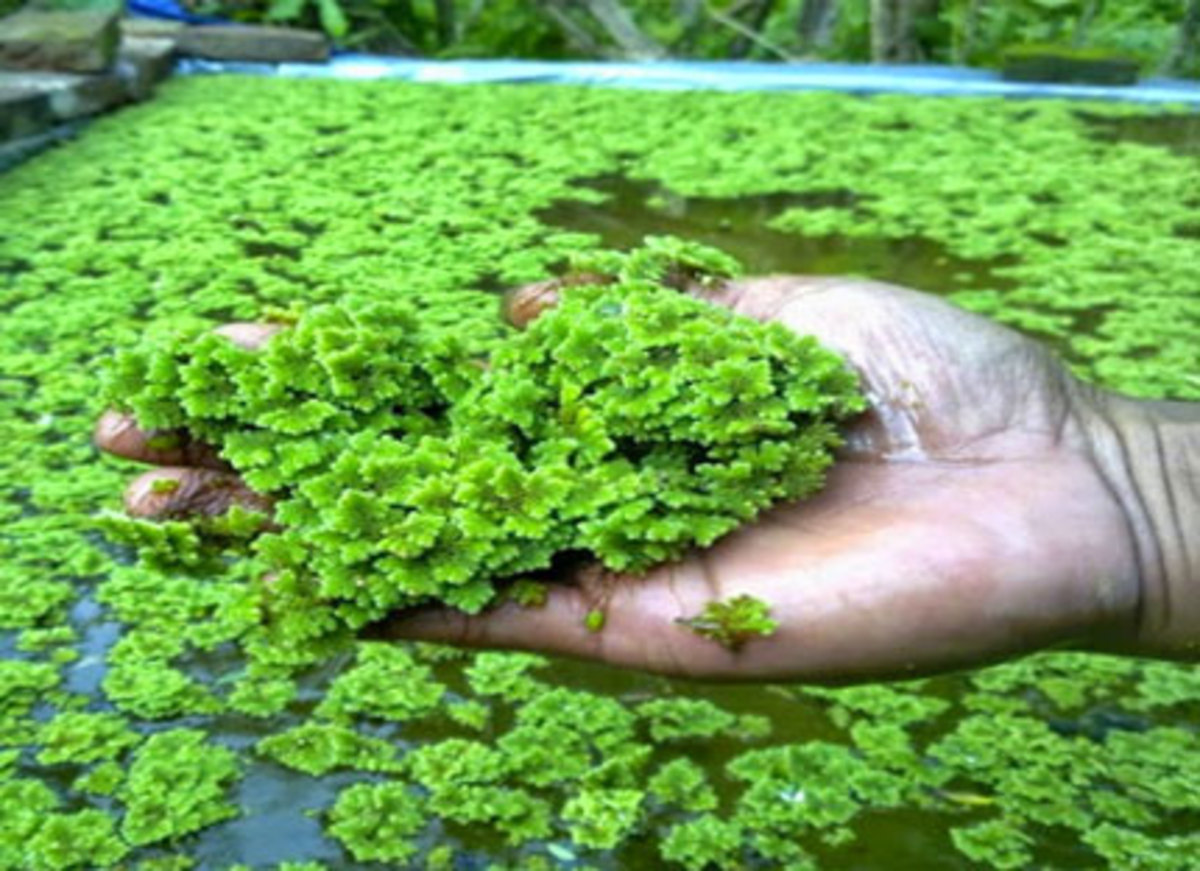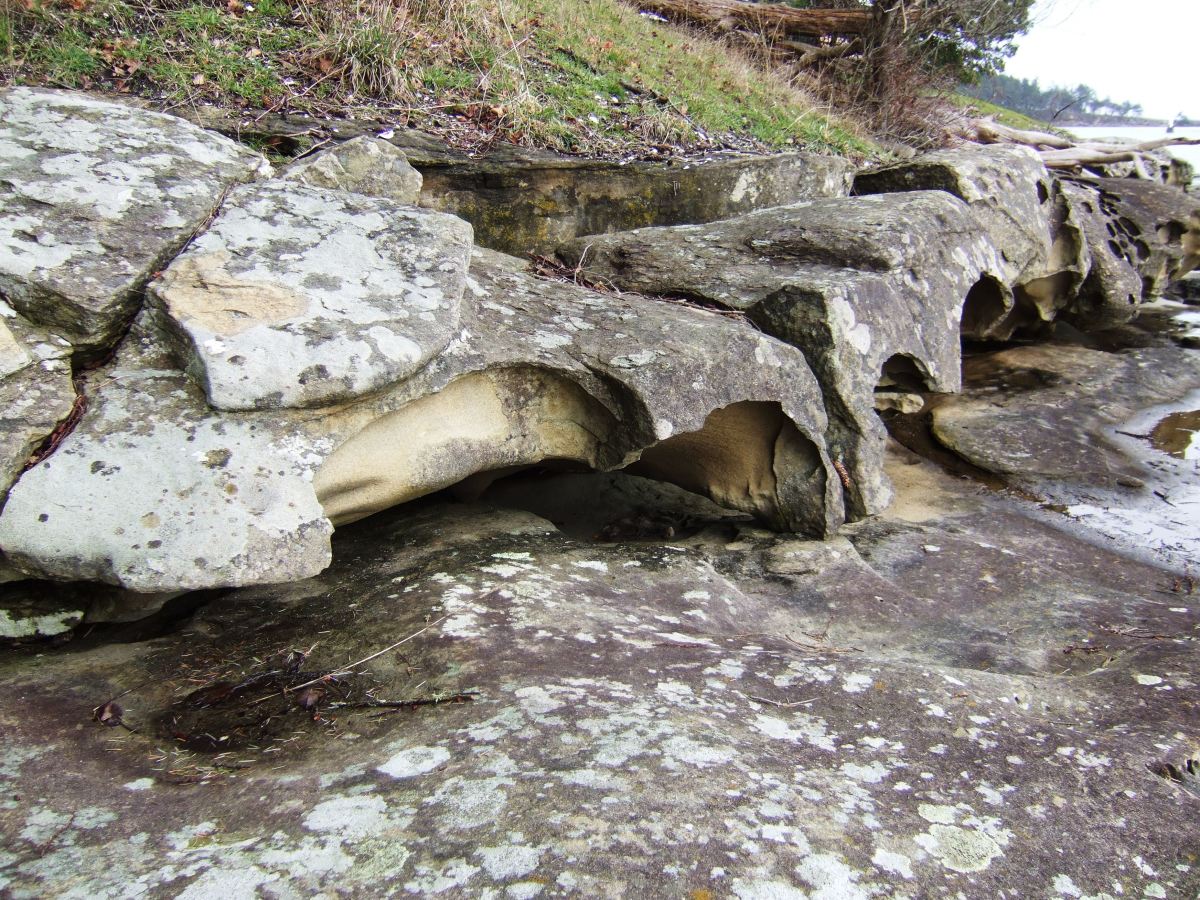Food Not Lawns: Reasons to grow food in your backyard
The Food not Lawns Movement
A lush green carpet trimmed to perfection, the lawn is the space filler between stoop and sidewalk for most homeowners.
The term 'Food not Lawns' - a play off of the Food not Bombs initiative - was first officially used in Eugene, OR by food activists who were inspired to increase access to sustainable, healthy food. Food Not Lawns International now has chapters in many towns. But even before the term was coined, gardeners were already participating in this urban agriculture movement to tear up turf grass and replace it with vegetable gardens, berry bushes, fruit trees, chicken coops, herb patches, or any other food production scheme!
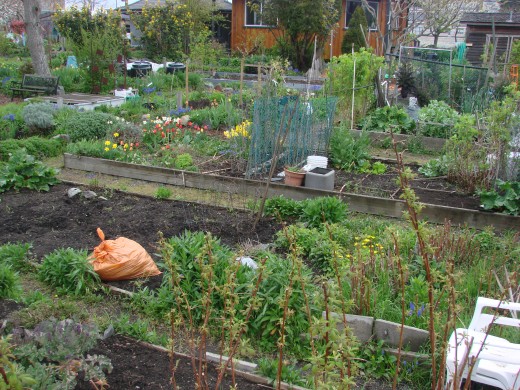
Lawn Obsession in America
People trace America's obsession with the lawn back to the rise of suburbia in the 1950s and the image of the cookie cutter house with a white picket fence as the ideal home. The verdancy and trimness of one's lawn was (and is still) a sense of pride in American culture. It is a reflection on the state of one's home - after all, if the lawn isn't manicured then what else could be falling asunder inside the home?
America grows more lawn than food. Here are some statistics on just how much space is used for cultivating this purely ornamental herb.
- 80% of all households in the US have privately-owned lawns (Templeton).
- North Americans currently devote 40,000 square miles to lawns, which is more than the amount of land used for wheat or corn (Fulford).
- The average size of a lawn in the United States is one-fifth of an acre (Vinlove and Torla) to one-third of an acre (Templeton).
- Space devoted to turfgrass is growing at 600 square miles a year (Kolbert).
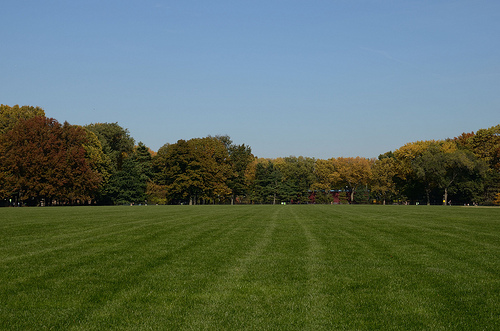
Environmental Hazards of Lawns
Lawns are highly unnatural ecosystems that require high amounts of resource inputs. Here is why, for the sake of the Earth, it's worth replacing them:
- Lawns are monocultures. Grasses found in natural fields and pasture always contain a variety of wild grass species, whereas the turf we grow at home is a single species of non-native highly selected for grass. The species most commonly used are Bermudagrass or Kentucky Bluegrass. These are perhaps America's most grown crops.
- Lawn irrigation accounts for almost half of US homeowner water usage (NRCS). Much of America does not have the water resources to sustain this level of consumption. Yet the lawn is so entrenched in American culture that even Los Vegans go to great pains to keep their patch of green blades lush.
- 74% of all US households use industrial fertilizers and pesticides on their lawns and ornamental gardens (Robbins et al.). Synthetic pesticides and fertilizers lead to a multitude of environmental ills: (1) They contaminate drinking water. (2) They end up as "run-off" in lakes, rivers, and the ocean, where the fertilizer creates algal blooms and dead zones in which no aquatic life can survive. (3) Pesticides are poisons and when applied to the lawn can especially be a health hazard to children, pets, and wildlife.
Why Replace Lawns with Food Gardens?
Turning to organic lawn care, or using native, natural flora is a good alternative to the over-manicured lawn.
But growing fresh food right in your own backyard has so many benefits. Top among them: if you're going to put time and energy into growing anything, why not something you can add to the dinner plate?
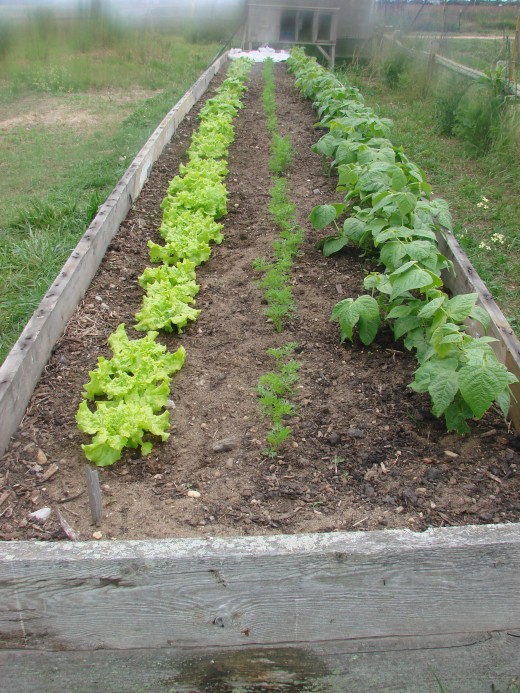
Add Fresh Nutritious Vegetables to Your Diet
Ever get really turned off by the wilted, yellow leafy greens at the supermarket? Or the frost-bitten green beans? Or the tasteless and mealy supermarket tomato?
Growing your own vegetables will remind you what fresh produce is supposed to taste like!
When they're in your yard, just waiting to be picked, your vegetable or fruit intake is likely to increase - just the doctor's orders. Have trouble getting your kids to eat their veggies? In my experience when the children are involved in the planting and harvesting, they're much more likely to try a new vegetable. Plucking the most recently ripe cherry tomatoes and scaveninge for delicious snap peas becomes a rewarding game.
Furthermore, research has suggested that the fresher produce is, the more nutrients and vitamins it retains. The longer a vegetable or fruit sits on the shelf, the more nutrients it loses. So the food you grow and eat at home soon after harvest is actually bite for bite better for you.
Lower the Carbon Footprint of Your Food
The Environmental Protection Agency estimated that food travels on average 1,500 miles before it reaches the consumer's plate. This takes into account the transport of the seeds to the farm, the food from farm to processing and packaging plant, plant to supermarket, and supermarket to the consumer's household. This all entails the burning of fossil fuels - a nonrenewable resource, and the addition of carbon dioxide to our atmosphere which contributes to climate change.
A way you can reduce your food's carbon footprint, is thus to buy local and organic. By growing it yourself you know exactly what went in to the production. And what's more local than a few steps from your door!
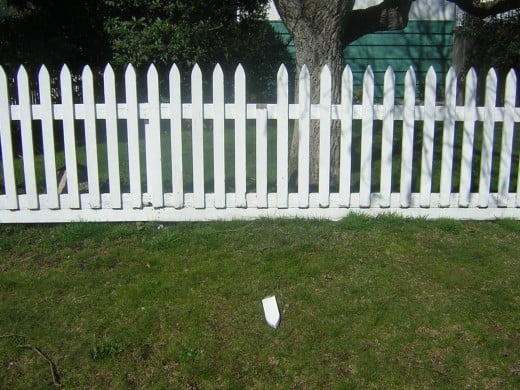
When the Neighbors are not Appreciative
Some towns or housing units have codes that prohibit the growing of food in yards, due to its "unsightliness." This is wildly frustrating to food activists, who see it as backward and blocking the progress of a sustainable food culture in America.
It may take Americans some time to redefine what an attractive yard means; sprawling tomato plants certainly are less orderly looking than a trimmed lawn. And if you don't keep up the weeding it can start to look a bit 'jungly' as any farmer will admit.
Some edible plants however can be made to look quite attractive. This is often called Edible Landscaping. For example, rhubarb and chard have brightly colored stalks that add a splash - I've even seen some towns use them in public spaces like roundabouts. Berry bushes or fruit trees also blend in nicely with most landscapes and can produce lovely flowers.
Or...Get Someone to Start it For You!
Landscaping companies like City Grown in Seattle install and maintain food gardens in the yards of private homes. Different systems exist; in some cases the homeowner may pay the landscaper and keep the harvest, in others the landscaper may 'pay' to use the homeowners space by leaving them a share and selling the rest at farmer's markets.
Get Started!
Tear up that lawn! Or a section of it, if you prefer - understandably so - to not convert your whole yard (kids and dogs need places to run after all, and big gardens do take work). Urban Garden Magazine has a good article that outlines the steps: How to Turn Your Lawn into a Garden. Have a potluck or pancake breakfast and turn it into a work party with your friends and neighbors. They know they'll be reaping the benefits come harvest time.
What would you do?
Would you convert your lawn into a food garden?
Sources
Templeton, S.R., D. Zilberman, and S.J. Yoo. 1998. An economic perspective on outdoor residential pesticide use. Environmental Science & Technology 2: 416A-423A.
Fulford, Robert. 1998. The Lawn: North America's magnificent obsession. http://www.robertfulford.com/lawn.html (accessed 4 January 2011).
Kolbert, Elizabeth. Turf Wars, The New Yorker 21 July 2008. http://www.newyorker.com/arts/critics/books/2008/07/21/080721crbo_boo ks_kolbert (accessed 1 April 2011).
NRCS (National Resources Conservation Services). USDA. Lawn Irrigation Guide. http://plant-materials.nrcs.usda.gov/pubs/idpmsfs5464.pdf (accessed 1 May 2011).
Robbins, Paul, Annemarie Polderman and Trevor Birkenholtz. Lawns and Toxins: An Ecology of the City. Cities 18 (2001): 369-380.





